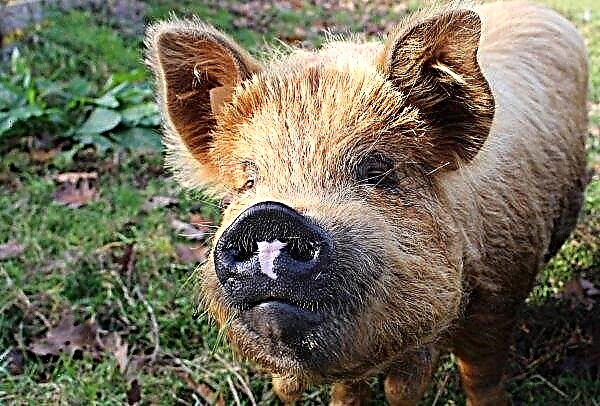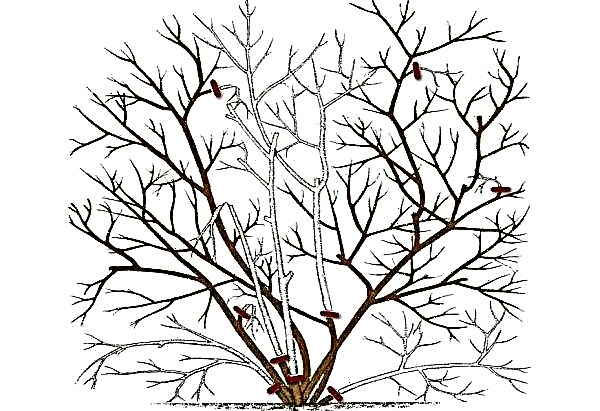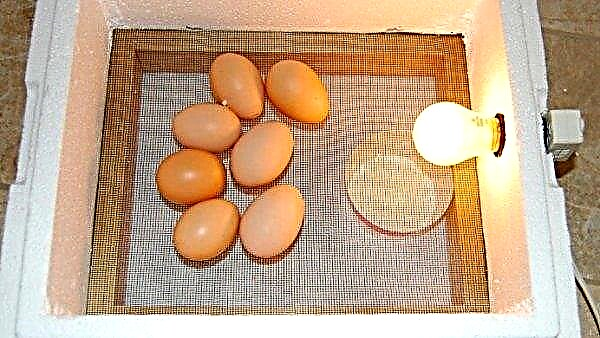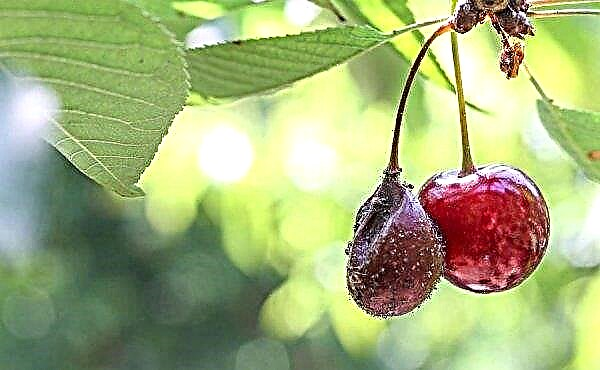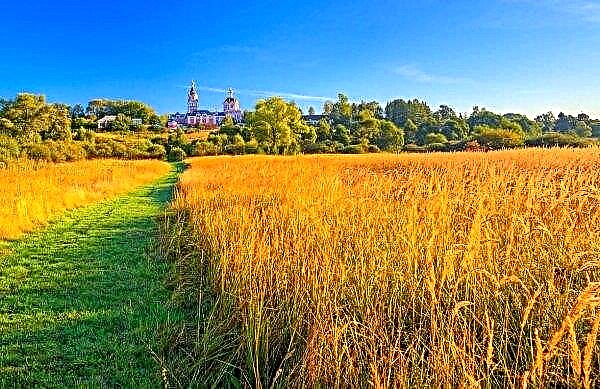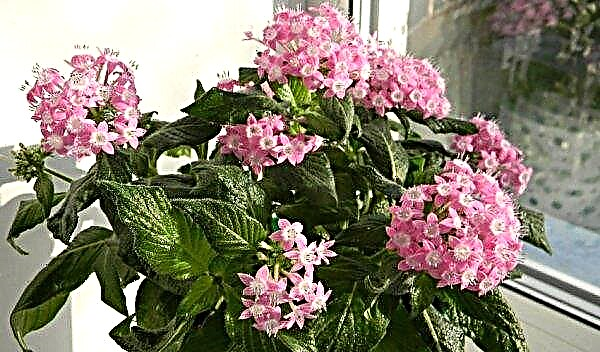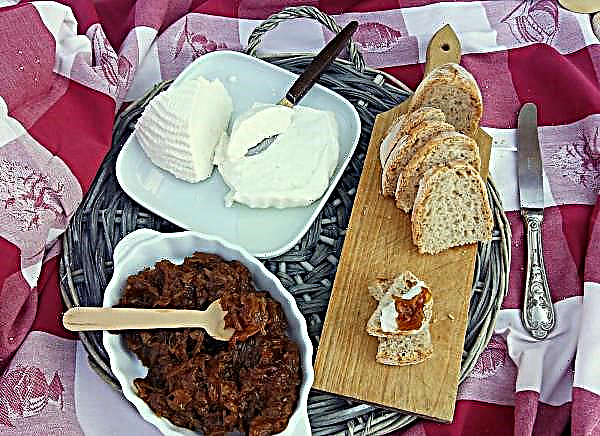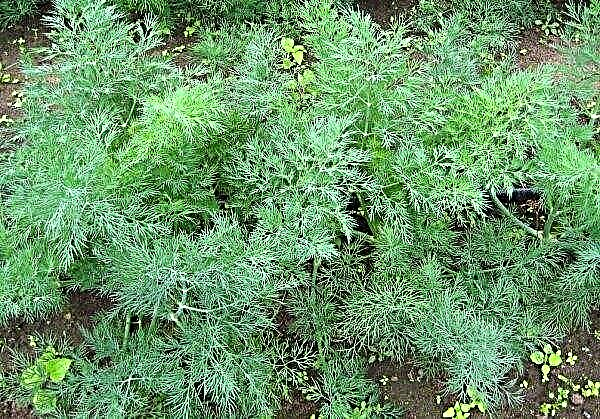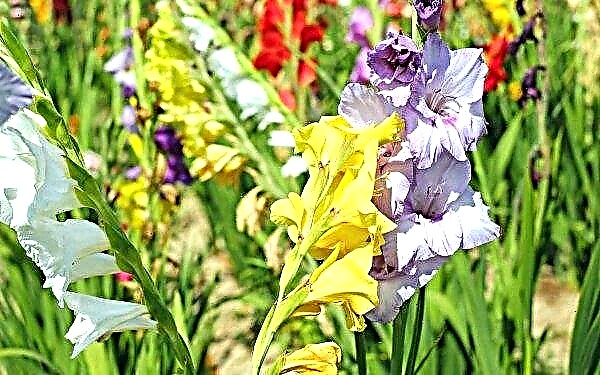Dungweed, or koprinus, are fruiting bodies that bear some resemblance to grebes. Many consider them unsuitable for food because of their appearance and fine structure. This opinion is considered false, since this fungus can be repelled only when consumed in parallel with alcohol.
Types of dung beetles
In nature, there are many varieties of the fungus in question.
Did you know? In many European countries, ink was made from the secreted dung liquid, which is why this fruiting body was also called the “ink cap”.
Specialists distinguish 10 main types of dung beetles, which differ in their external signs, structure or properties:
- White. The cap size of this mushroom is 50–150 mm. The shape of this type of fruiting body changes as it grows older: in young specimens it is elongated-elliptical, and in adults - like a narrowed bell. The color of this variety of dung beet can be either white or light gray or light cinnamon, and the central tubercle on the hat is usually brownish in color. This part of the fungus is densely covered with fibrous structure scales. The soft flesh of the hat has a white color and a neutral taste and aroma. Leg length - 100–350 mm, 10–20 mm in diameter. This edible representative of dung beetle mushroom usually grows in small groups on organically fertilized lands. The collection of white dung beetles is carried out both in summer and winter.

- Gray. This species has a gray hat (50-100 mm), sometimes with a brown tint. The central part of the fungus is more darkened. The young specimen has an elliptical cap, and adult representatives - bell-shaped. The light pulp of the fruiting body darkens at the cut site, has a pleasant taste and a neutral smell. The length of the slightly bent legs is 100-200 mm. Gray dung beetles prefer to be located in large groups on soils with a large amount of humus. Harvesting is carried out from May to October. This mushroom is conditionally edible, that is, it is used in boiled, fried and pickled form. Dung beetles are considered edible only at a young age. Concurrent use of alcohol and a mushroom can cause poisoning.
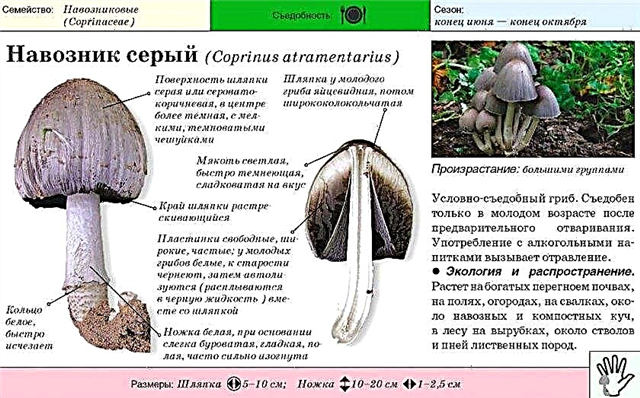
- Scattered. The folded hat of this mushroom can be represented in the form of an ellipse, cone or bell, its size is 5-15 mm. The color of this part of the fruit body has a velvety surface and a creamy tint that darkens closer to the center. Older samples are very bright. The mushroom pulp is tender enough, tasteless with a neutral smell. The white leg of a scattered dung beetle reaches 10–15 mm in height and 10–20 mm in diameter. Such a mushroom can be seen growing on stumps and rotting wood. The growth duration of this inedible representative of dung beetles lasts from summer to late fall.

- Home. The hat of the type in question has the shape of a bell, its size is 20-50 mm, has a scaly coating and a corrugated edge. The color of this part of the fruit body is yellow with a brownish tint, and the center is reddish. The pulp of this inedible mushroom is thin, without a pronounced smell. The height of the light smooth leg is 40–80 mm, and the thickness is 40–50 mm. Usually, domestic dung beetle grows in groups on rotting or dead wood from early summer to September.
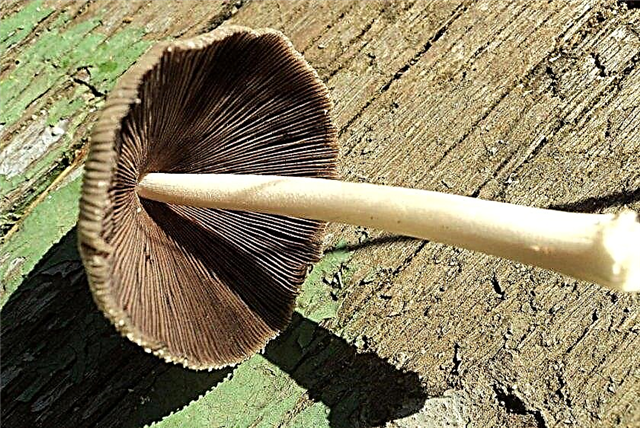
- Flickering. This representative of dung beetles is characterized by a hat (20–40 mm) in the form of a bell or in the form of an ellipse. This part has a yellow color with a brown tint, which is brighter in the central part. White flesh has a sour taste and a neutral aroma. The length of the light smooth leg is 40–100 mm, and the diameter is 4-5 mm. This inedible mushroom is found in forests and parks, and its place of growth is dead wood, tree roots or stumps. Active growth of this species lasts from late spring to mid autumn.

- Willow. The considered representative of dung beetles has an elliptical shape of a hat of a light fawn shade, having a whitish coating. Usually this poisonous mushroom has a corrugated or ribbed border at the edges. The elongated leg of the mushroom has a white color. The willow dung pulp has a snow-white color and a delicate structure without a pronounced aroma and taste.
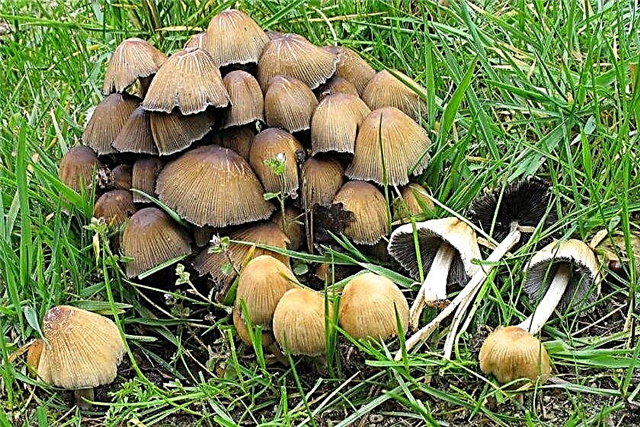
- Fluffy. This species has a hat (25–40 mm) in the shape of an elongated ellipse, which with age transforms into a bell with edges drawn to the top. The surface of this part of the fungus is strewn with white flakes. The light leg of a fluffy dung beetle is 130–180 mm high and 25–40 mm in diameter. The white flesh of this inedible mushroom has a delicate structure, as well as a neutral taste and aroma.

- Snow white. The cap of this mushroom has an elongated elliptical shape, which changes with age into a cone or bell with inverted edges. This part of the fruiting body has a white color, and is also covered with a white coating. The pulp of the inedible species of dung beetles under consideration is light, having a fine structure. The white leg of the mushroom is 50–80 mm high and 10–30 mm wide. Snow-white dung beetle can be found growing in manure or wet grass. The active growth period is summer - autumn.
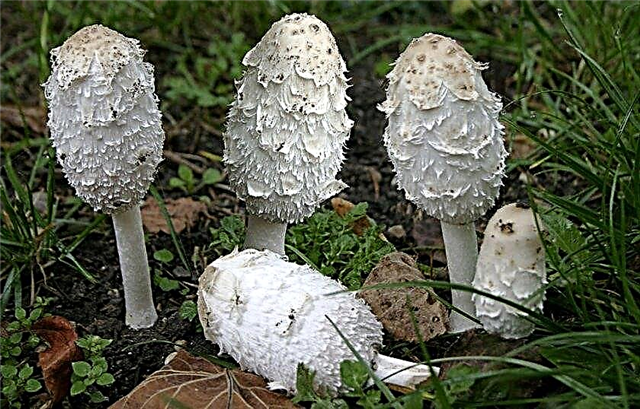
- Resinous. The white hat (60–100 mm) of the species in question has an elongated elliptical shape, with time it becomes like a bell. The flesh of this inedible mushroom has a light color and a pronounced resinous smell. The height of the leg is 100–200 mm and its width is 10–20 mm. Such a mushroom usually grows in deciduous forests on decaying or dead wood. It often gathers in groups. The season of this inedible mushroom falls in August - November.
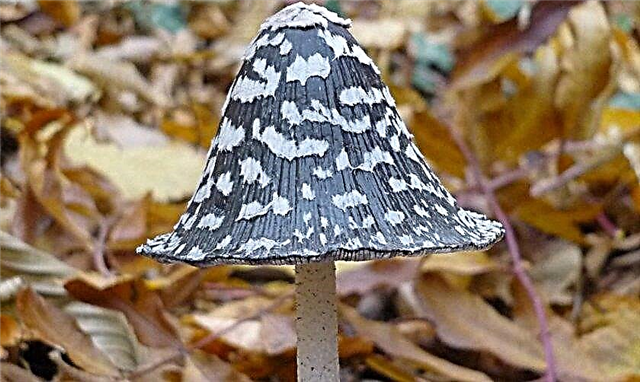
- Folded. The corrugated hat (8–20 mm) is presented in the form of a bell, which aligns with age. The color of the considered part is yellow with a brown tint, while the old mushroom has brown-gray color. The flesh of this inedible dung beetle is characterized by a fine structure. The light leg of the inedible mushroom is 40–80 mm high and 10–20 mm wide. Folded dung beetle in nature is found both as a single fungus and collected in groups. This mushroom has a fairly long growth season - from spring to early winter.
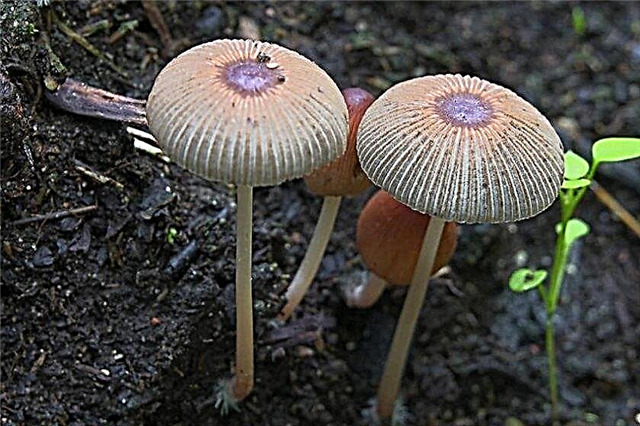
Structure
The composition of the fruiting body under consideration has not been fully studied. Specialists managed to determine the nutritional value of the dung beet mushroom.
Did you know? White dung beetle is one of the ingredients for French delicacies, and in order to prevent visitors from scaring off the name of the mushroom, the culinary specialists gave it the name “lawyer wig”.
100 g of the fruit body contains:
- proteins - 3.09 g;
- fats - 0.34 g;
- carbohydrates - 3.26 g;
- calories - 17–22 kcal.
Despite their unremarkable appearance, these fruiting bodies contain:
- minerals: copper, manganese, calcium, iron, sodium, potassium, selenium, phosphorus;
- polyosis;
- folic acid;
- koprin (not compatible with alcoholic beverages);
- tyrosine and histidine (in specimens growing in the wild);
- amino acids;
- fatty and pantothenic acids;
- nicotine;
- trypsin and maltase;
- glucose and fructose.

How does it work
The "anti-alcohol" component of the fetal body protoxin cooprine acts on the body in such a way that inhibition of alcohol metabolism occurs at the moment when acetic aldehyde begins to form. The substance is stored in the body for two days.
- As a result, poisoning, which is characterized by such symptoms:
- the manifestation of red, purple spots on the skin;
- speech impairment;
- nausea, diarrhea, vomiting;
- increased sweating, thirst;
- heart palpitations;
- vision problems;
- the emergence of a feeling of heat.
The average duration of such sensations is 2-3 days. All of these symptoms are not deadly. And the fact of mortality from the action of this substance is not fixed.
Important! Only conditionally edible species can be used for treatment — white or gray.
How to use
There are several ways to take such a fruiting body. Various pharmacy preparations incorporate protoxin cooprin.
Thanks to modern medicine, the patient is offered 3 treatment options:
- powder treatment;
- the use of capsules;
- the use of rectal suppositories.
The most common treatment for drunkenness is pouring powder into food for a drinking patient. For this, it is necessary to crush the dried coprinus into powder and add 2 pinches to the dishes once a day. You can also brew tea with mushroom powder with the addition of honey or lemon.
The patient is not always informed about such a procedure, but consultation and observation by a doctor is a prerequisite before starting treatment to exclude possible contraindications.
Powder
Powder from gray (less often white) dung beetle is the most popular pharmacy remedy for alcoholism. Dung beetles are used mainly in the form of powder.
The treatment technique implies such actions:
- Adding 1 teaspoon of the powder substance to the patient’s food.
- Perform this procedure within 14 days.
- For patients with a more protracted form of alcoholism, treatment can last up to 4 months with a dosage of 2 teaspoons.
It is recommended that the treatment process be carried out during periods of hard drinking. The fungus does not have a medicinal “anti-alcoholic” property; it causes an aversion to alcohol due to the occurrence of poisoning.
Important! If, after harvesting, dung beetles were not processed, then the active anti-alcohol component can dissolve within 3 hours, since the fruiting body has the ability to undergo autolysis.
Capsules
Taking capsules is also a good cure for alcohol addiction.. Such a preparation is presented in the form of gelatin capsules containing an extract of a given fruiting body. Due to its shell, the drug quickly dissolves and is absorbed in the body. As in the first embodiment, the capsule can be drunk by a patient who knows about the course of treatment, and one who does not suspect the procedure. In the second case, capsules can be given to the patient, calling them vitamins or dietary supplements. The advantage of this method of treatment is a more accurate dosage and ease of use.
The advantage of this method of treatment is a more accurate dosage and ease of use.
Take capsules according to this principle:
- Take 2 capsules three times a day with meals.
- The duration of the procedure is 1 month.
- The need to include a two-week break between courses.
Rectal candles
Due to the method of administration of the drug, this treatment option did not receive as many positive reviews as the two previous methods. But unlike others, such a course of treatment is highly effective.
This is due to the fact that rectal suppositories, once in the body of a drinking person, enter the blood much faster, and cocoa butter, which is contained in the preparation, affects the acceleration of the process. The course of treatment lasts for a month with the daily introduction of one suppository per day.
Contraindications
Almost every person can prescribe treatment with mushrooms by dung beetles, since there are no contraindications to them by mail. But it is recommended to refrain from carrying out a course of anti-alcohol treatment according to this technique to people with serious problems of the cardiovascular system. You should also not use drugs with dung extract for people with diseases of the kidneys, liver and lungs. Thus, dung mushrooms are represented in ten different species, but only two of them (white and gray) are permissible for the manufacture of a cure for alcoholism. Treatment can be carried out by various methods, which as a result should cause discomfort for the patient from alcoholic beverages.
Thus, dung mushrooms are represented in ten different species, but only two of them (white and gray) are permissible for the manufacture of a cure for alcoholism. Treatment can be carried out by various methods, which as a result should cause discomfort for the patient from alcoholic beverages.











